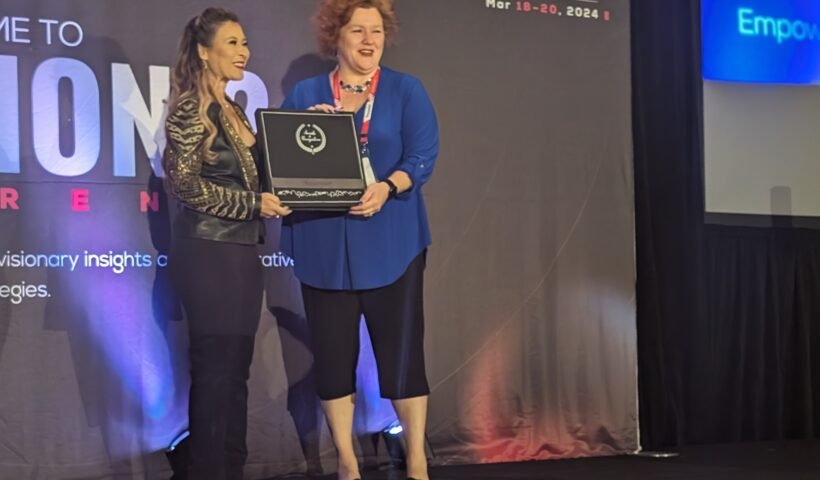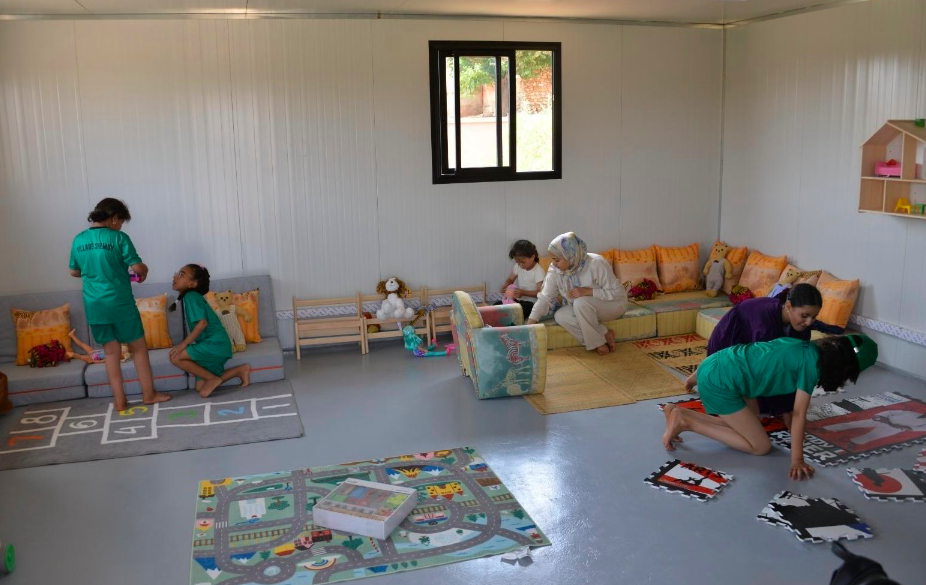Location: Malaysia
Website: https://www.paultwalton.com/about
“High Expectations lead to Outstanding Outcomes”
Visiting and working in many schools throughout the world provides leaders with opportunities to experience various cultures, curriculum and a cornucopia of teaching methodologies. Throughout these communities many adhere to international benchmarks, some work towards world class status and all will follow the frameworks provided by the national institutions. Within these parameters, it is always interesting to see how school communities can plan to create best possible learning outcomes and provide the highest level of education to all.
There are many variables to consider when joining a school, visiting or forming a judgement of a school to help improve an institution further. A range of frameworks, tools and advice is available to select from by a leadership team at a school.
An experienced International School Leader, Dr Paul Walton brings his views on producing an outstanding school. He is a strong believer in building trust, fostering a culture of collaboration throughout a school and lifelong learning.
Experience
With over 20 years of experience in education both in the UK and internationally, he has been a Principal of international schools in various countries and led schools to ‘Outstanding’ inspection ratings. He has worked in Hungary, Malaysia, United States, Slovenia and Bahrain enjoying a rich variety of cultural differences, experiences and adventures.
He started his career in the UK as a computer science teacher, quickly moved into leadership and led schools on Teaching and Learning, Technology for Learning and Professional Development and becoming an International School Principal.
As a Principal and School Inspector, he has continued to visit, support and learn from outstanding schools around the world, developing strategies for best practice to develop the highest possible quality of education throughout many British International Schools.
Starting points
“Moving from a current state to a desired state”
The quote above is a common viewpoint and critical to implement successful change. I share the work of Lewin (1947) with teams at the beginning of a change management process. It refers to the process of actively transitioning from where something is currently at (the present state) to a specific, planned future condition that you want to achieve (the desired state), often involving strategies to bridge the gap between the two points.
The school may have a very clear idea or ‘where’ they would like to be, or a desired outcome. The steps below will share ideas on where to start and how to get there.
The first step is to evaluate and this helps to form a picture of where the school currently operates at. The next stage uses the data, research and evidence to not only arrive at a clear current state but to also identify the potential gaps. A change management plan can be created and then reviewed at regular intervals to measure the progress to reach the desired state.
A very simple yet effective four stage plan.
- Evaluate
- Current State and Identify the Gap
- Implement a Change Management procedure
- Apply, Adapt and Review to arrive at Desired State
By the end of this article, you will be equipped with the tools to complete the first two steps above and have recommendations and research-based models to explore and navigate the next two.
Evaluate
I would personally recommend six points to address in the ‘Evaluate’ stage to create opportunities for everyone to work together to help build a positive school environment for staff in an outstanding school. At the start of this process I would introduce the ‘Norms of Collaboration’ by Garmston and Wellman (1999), this provides a toolkit for all staff to follow and they feel that their input is valued, appreciated and potentially alleviates any unease.
The points below are some that I have implemented in British International Schools to help collect the data, arrive at the current state and complete the evaluation. These are:
- Quality of Education
- Finance and Growth
- Facilities
- Student Outcomes
- Quality Assurance
- Community
- Quality of Education
This section refers to the published inspected reports or the accreditation reports and suggested recommendations to improve. This can be used as a critical aspect of a SWOT analysis regarding the school especially with the quality of education provided. Some schools may have a national, an international or a third reference point with inspections and mandatory visits from the ministry or other affiliated organisations. All of these should be gathered and included.
The 3-5 year strategic plan should be collected at this point along with the annual improvement plans that feed into the strategic plan. This also creates a clarity around where the school has identified itself to be and where it is heading in the short, medium and long term. This is normally a published document referring to the Vision, Mission and Values of the school.
External data such as examination outcomes throughout various sections of the school and a detailed breakdown of the success of the individuals and groups of students showing progress and attainment is welcomed. The report could show gaps, trends and flight paths for over and underachieving groups of students. This feeds into understanding the headline figures at the end of the school journey in which the students leave and may also factor in external examinations, comparisons nationally/internationally, university applications and so forth.
A large proportion of the data in this section should be available via the website as this type of information is normally published to celebrate the academic successes of the students.
- Finance and Growth
As a Leader joining a school, it is imperative to understand the budgeting procedures, the financial state and operations of the school. Often overlooked by some ‘Head’ or ‘Principal’ positions as it includes a greater emphasis on teaching and learning, academic, curriculum, etc.
My belief is the opposite as having a successfully thriving school or a sensible financial approach can open doors to further improve other aspects of the school. For example, if there is a carefully crafted finance plan for 3-5 years, zero based budgeting and a focus on maximising expenditure on items that positively impact the learning then this will improve and increase your effectiveness in the other areas of this evaluation.
A higher revenue could help update facilities, improve professional development, recruit or retain the best staff and have a direct correlation with the student outcomes and quality of education. Areas to consider are fee collection, facility rental, external vendors for extra curricular activities, increase fees, student enrolment and planning ahead for operating and capex expenditure.
The bottom line is often, if this aspect is successful you can then invest in all other areas of the school to improve to reach that desired state. A financial summary and projection for the next three years should be included.
- Facilities
State-of-the-art school facilities can be a huge positive to a school. Not only does this create exceptional learning experiences for students, it can also positively contribute to other areas of this evaluation. For example, having excellent facilities can improve the quality of education, bring in more money financially, increase the opportunities for quality assurance and partnerships and finally have an impressive platform to invite in members of the community.
Although the building is mere bricks and mortar and is by no means the most important aspect to consider, it can have a very positive impact on improving a school. Without the premium facilities available, at some point the school will have to focus on the finance and growth aspect to further invest in the facilities.
Build schematics, timetabling of rooms, maintenance, campus contracts, potential rental/growth opportunities can be explored.
- Student Outcomes
There are many successful schools that do not have the financial support, nor the facilities or indeed the accreditations or partnerships but they still provide incredible student experiences and outcomes such as examination results, progress results and value added. Furthermore, these students can excel academically and secure places at their first choice universities.
These types of schools should be recognised, celebrated and valued.
The backbone of such schools normally include a group of dedicated, passionate and incredibly committed professional staff along with caring and supportive parents in the community.
It is my opinion that student outcomes can be attained in a comfortable way when the staff, students and parents have the appropriate facilities to provide this. For example, an outstanding school should aim to have appropriate classroom space, library/revision areas, a main hall to gather, a performance space, outdoor sports facilities, art areas, science labs, playground, music practice rooms, learning support classrooms, language facilities, counselling spaces, collaboration areas and more.
These listed fit in with having an holistic approach to education and will provide students with the physical environment to develop socially, emotionally and build those vital emotional intelligence skills. It also creates a foundation to explore, learn and study.
Additionally, there may be requirements from a national perspective, international tournaments or ministry regarding the need for a minimum specification to host sporting or performance events. This then would require a swimming pool, courts, hall, pitches that all fit the criteria for events.
Schools that can deliver this holistic education approach, gain the university placements and academic outcomes are impressive. Other factors of student outcomes could be delivered in the form of student surveys, wellbeing meetings, student council projects and overall how happy students are throughout their education at school.
Comparing student outcomes further could include the PISA ranking, national/international data and looking at like for like schools and students. An important factor is looking at the starting points of all students, measuring their own individual progress and appreciating the development of every single student in the school. Focusing on all students, it is key to set high expectations, this will lead to improved performance in others according to the Pygmalion effect (1968).
- Quality Assurance
Many schools will talk through the strengths of the school and it is common to identify key areas that a school believes they are doing extremely well. Past reports can show a trend over time of the journey as a school.
An external accreditation or inspection can further solidify this accurate self-evaluation of a school and can be used as quality assurance for all stakeholders in the community. Accreditations can show that a school has met or exceeded challenging metrics for education, wellbeing, curriculum, technology, student leadership, the environment etc.
It can be a very important tool especially if your vision, mission and values hold a certain approach or initiative close to your heart. This is an objective reinforcement that you are doing what you say you do and that you are delivering this at an excellent level.
Having transparent policies, shared examination outcomes direct from the exam board and providing a mechanism to see the direct feedback from parents are other ways to build evidence to show that people agree with your approach, quality and level of education at school.
The accreditation and inspection processes are insightful tools to help a school continuously develop, highlight positive areas, take deep dives in sections of the school and feed directly into an improvement plan.
Communicating successful accreditations and inspections have a positive impact on staff and schools through change management processes. This then creates a sense of purpose as mentioned in the 8-Step Process for Leading Change by Kotter (2002). The sense of purpose and urgency can be clearly communicated to all staff together and one important aspect of change management is to celebrate successes and quick wins. Kotter mentions ‘Nothing motivates more than success’.
- Community
Understanding the importance of the community is key. Many of the aspects above can be supported by an active, caring and helpful school community. Creating a positive environment based in trust, clear communication and being authentic will help foster a collaborative feel.
Data showing the ‘engagement’ from the community can build a very accurate correlation with a positive recommendation or ‘word of mouth’.
The community aspect can be impacted by staff retention, recruitment and development. By parents that opt to stay at school, attend events or those that decide to leave the school environment. Engagement for staff and parents is paramount and there are many approaches to take to increase this. Staff should feel valued, supported and have the opportunity to develop. A strong professional development programme is a must, staff surveys throughout the year, clear communication and a focus on wellbeing are some of the strategies that could be used.
For parents, a few can be listed below:
- Community events
- Sports events and Performances
- Coffee mornings, parent surveys and feedback
- Parent associations, picnics, social events
- Newsletters, updates, social media
- Parents evenings, open days
- Celebration assemblies, volunteers and environment projects
One of the most important factors in when families join a school as mentioned above is the word of mouth and this community aspect directly affects what others will say about the school community. Applying some of the ideas above can quickly turn negative reviews into positive testimonials, reasons to join the school and deciding factors to stay. The key for building a connection with the community is ‘Trust’.
According to Covey (2006), the first steps in creating trust are through self trust and ‘in our ability to set and achieve goals, to keep commitments, to walk our talk’. In a nutshell, it is created by actions and ‘doing what you have promised to do’. Fulfilling the promises over time starts to create trust in any sector and having a high standard models to all.
Is the community engaged with the school? How do you know and how can you show this?
Current State and Identify the Gap
Once the evidence collection is completed, the team leading this project should have a fairly clear understanding of where the school is in relation to the six areas in the ‘Evaluate’ stage.
Overall strengths and recommendations are included at the start of the document along with key school information showing a breakdown number of students, staff, curriculum followed etc. This Current State can be simplified in a report, table or given a RAG rating with areas to improve to identify the gap. In the report, all information regarding the six points should be included and summarised with references included to key evidence where needed. Recommendations can be created in relation to the six areas above, these should be specific, clear reasons shared for change and to be measurable.
This stage should clearly articulate the current provision of education in the school. It should help, complement and inform the schools yearly self-evaluation and improvement plans. This document should be shared with staff to amplify the need for change.
Change Management Process
I have used several strategies to positively impact change, help improve schools and support all stakeholders throughout the process. Below there are five research-based strategies that can fit into your improvement plan and be used by staff, leaders and the governance team to help communicate the change to all:
- Kotters 8 step change model (Kotter)
- Start, Stop and Continue (Daniels)
- 5 Levels of Professional Development Evaluation (Guskey)
- Nudge Theory (Thaler and Sunstein)
- Lewin 3 step change model (Lewin)
Final Words of Wisdom
Each school is different and each community will have its own strengths and challenges. Being patient, positive and flexible is key to ensure that the change is authentic, thorough and involves the staff team together in a collaborative approach.
- Evaluate
- Current State and Identify the Gap
- Implement a Change Management procedure
- Apply, Adapt and Review to arrive at Desired State
To recap and elaborate further.
- Evaluate the school and start with the data – using the six areas mentioned above can help create a starting point to look at where the school can improve, invest and move forward.
- Current State and Identify the Gap – arrive at the current state, this can be formed in a
- Change Management Procedure – Create a Change Management plan, refer to the 8 step change model by Kotter.
- Desired State – Apply, Adapt and reflect upon the change management strategies along the way to reach the desired state.
The journey should be collaborative, improvement focused, with a sense of celebration and appreciation.
References
Garmstona and Wellman (1999), 7 Norms of Collaboration,
Guskey (2000), Gauge impact with 5 levels of data
Kotter (2002) Kotter’s 8-step change model available from:
https://www.mindtools.com/a8nu5v5/kotters-8-step-change-model
Lewin (1947), Kurt Lewin’s change model: A critical review of the role of leadership and employee involvement in organizational change.
https://www.sciencedirect.com/science/article/pii/S2444569X16300087
Stephen M, R, Covey (2006). The Speed of Trust: The One Thing That Changes Everything.
Thaler and Sunstein (2008) Nudge Theory in Business, Small changes making Big Impact,
https://changemanagementinsight.com/nudge-theory-in-business/
“The Pygmalion Effect: Definition & Examples” (1968), Simple Psychology,
















